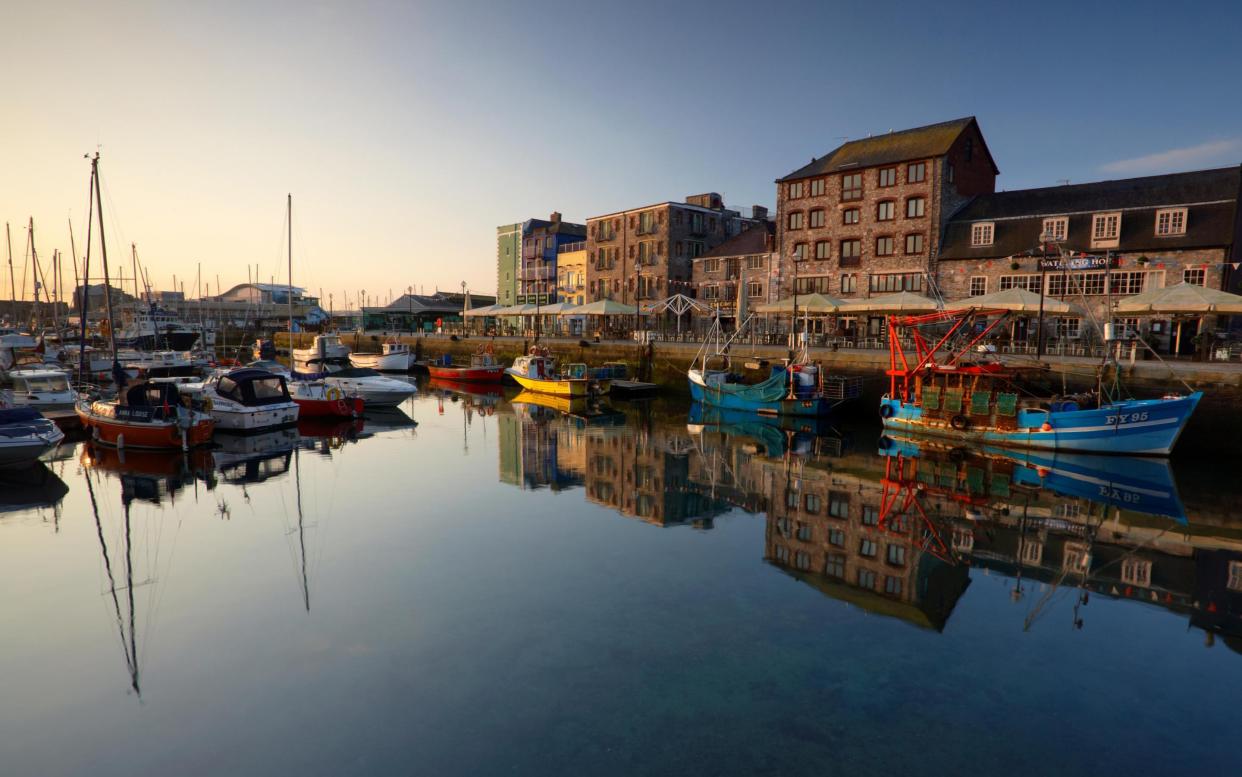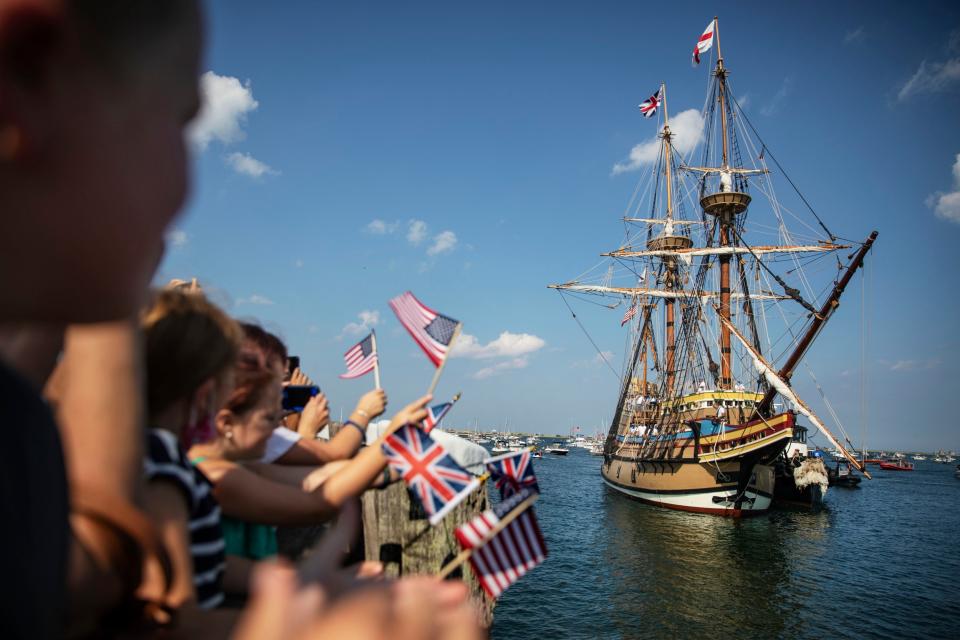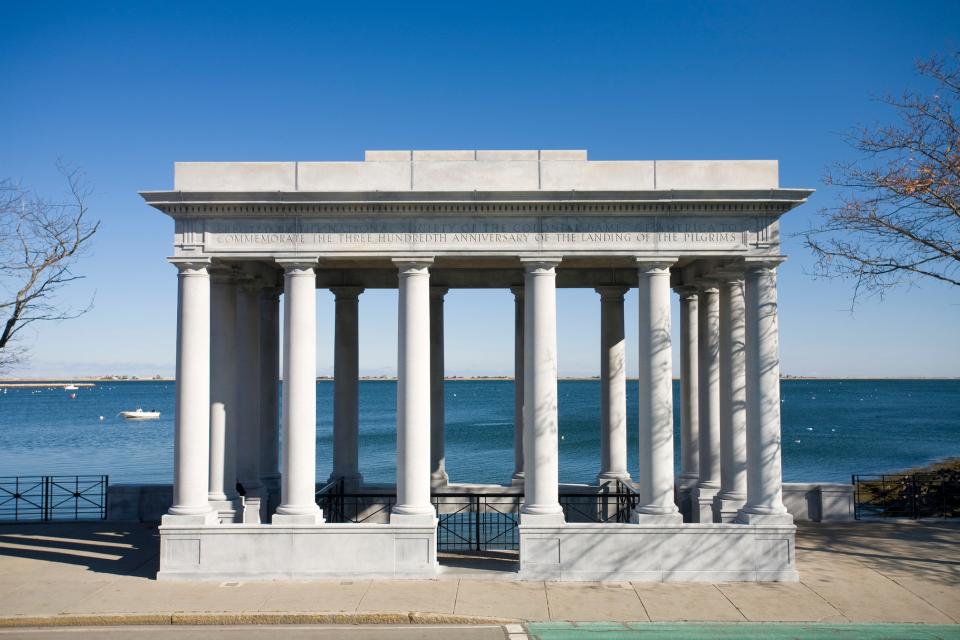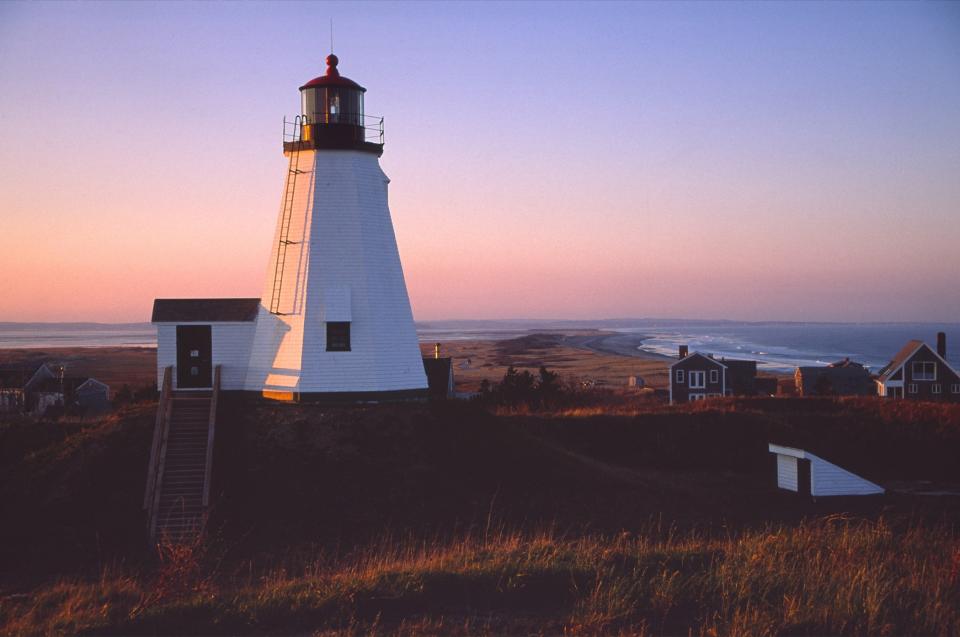A tale of two Plymouths, 400 years after the voyage of the Mayflower

These cities on opposite sides of the Atlantic are marking the 400th anniversary of the Mayflower’s epic voyage
Plymouth, Devon
By Fred Mawer
Of all the places in England with Mayflower associations, Plymouth tops the bill. It was from the Devon city that the Mayflower departed with its 102 passengers and 30 crew, voyaging across the Atlantic to the New World 400 years ago.
But Plymouth’s link is purely accidental. Having originally set sail from Dartmouth, the Pilgrims were 300 miles past Land’s End when the Speedwell, the smaller sister ship accompanying the Mayflower, began to leak and the ships were forced to turn back, docking in Plymouth.
Here, the Speedwell was abandoned and the larger ship set sail once more on Sept 6 1620. At least, that is the date according to the Julian calendar used at the time – the Mayflower 400 commemorations are taking the anniversary day as today, September 16, the date adjusted to the Gregorian calendar.
While most of the commemorative programme in England has been postponed to 2021, The Box (theboxplymouth.com), Plymouth’s multi-million-pound new heritage museum, is set to open on September 29 featuring a year-long exhibition, Mayflower 400: Legend & Legacy.
Judging by my sneak peek last month, the museum promises to be excellent, setting the journey in a wider historical context, addressing colonisation issues head-on, and featuring a 60 per cent scale replica of the ship. It will also host a permanent gallery focusing on maritime journeys that began in Plymouth, including by the likes of Sir Francis Drake, Captain Cook and Charles Darwin.

Also confronting the issue of colonialism is the new art installation, Speedwell, whose illuminated messaging challenges the idea that there was ever a “new world”. This imposing artwork has appeared on the Mount Batten Breakwater overlooking Plymouth Sound, and will be there until November (stillmoving.org/projects/speedwell).
Nearby, the modest Mayflower Museum (found above the tourist office in the Barbican) is worth a visit for those eager to discover more key details of the ship’s story, while the Mayflower Steps memorial is a striking, pillared portico built in the 1930s. It’s worth noting that the ship wouldn’t have actually sailed from this spot, as the pier didn’t exist back in 1620. Instead the specific embarkation point is more likely to have been just beneath where the Admiral MacBride pub (admiralmacbride.com) now stands.
Other Mayflower-related sights around the cobbled streets of the Barbican and Sutton Harbour also come with historical caveats and are best explored by following the free Mayflower Trail app (visitplymouth.co.uk). This hour-long walk, with newly-erected information boards, takes you to some impressive, off-the-beaten-track medieval merchants’ houses.
Finish your stroll at Jacka Bakery (38 Southside Street). Claimed to be the oldest working bakery in Britain, it has been around since 1597, and it has been suggested that the Mayflower may have been stocked up with the biscuits made here. Whether that is true or not, it’s worth indulging the suggestion – if only for the delicious croissants and sourdough loaves on sale.
Plymouth, USA
By Kathy Arnold
Recently renovated, the Mayflower II sits on Plymouth’s waterfront, a full-size replica of the original square-rigger that carried the Pilgrims to new lives in a new land. All spruced up and shipshape, the vessel will be taking centre stage for the 400th anniversary commemorations, offering visitors a feel for the conditions that the men, women, children and animals experienced during their voyage.

Travelling mostly down below, on the ‘tween deck, in a dark, cramped space, some 70 feet long and five and a half feet high, the Pilgrims spent 66 days rolling through North Atlantic storms. Nearby, what looks like a Greek temple enshrines a granite boulder. Carved with “1620”, Plymouth Rock marks the spot where they first stepped ashore – or so the story goes.
What is true is that the Pilgrims built a community here by the harbour and reminders of the past can be found everywhere. Even the street names, such as Brewster and Carver, recall Mayflower passengers and some of the earliest homes still stand. The oldest, the Richard Sparrow House, dates from 1640 while Mayflower passengers actually lived in the Jabez Howland House. In the Harlow House, comforts à la 1677 include a brick hearth, bake oven and wooden floorboards. But, as in Old England, many of the centuries-old buildings have new uses, from art galleries to cafés, offices and homes.
What the newcomers dubbed Plymouth was called Patuxet by the indigenous Wampanoag. Not surprisingly, conflicts arose and Cole’s Hill exemplifies the issues. This was the Pilgrims’ first burial ground, but for the tribe, this was – and still is – sacred land. A few steps from the headstones stands a bronze statue of Massasoit, the leader who saved the new arrivals from starvation. His memorial is now a gathering place for Native Americans, especially on their National Day of Mourning – Thanksgiving Day. While they remember injustices of the past, most Americans are sitting down to turkey and pumpkin pie.
In recent years, the narrative of America’s history pageant has changed to reflect a more accurate depiction of history, with bigger roles for indigenous peoples. New, and still a work-in-progress, is the Plymouth Tapestry at Pilgrim Hall Museum (pilgrimhall.org). Across 20 panels, this Bayeux-like needlework project commemorates the anniversary with a colourful, stitched depiction of the two cultures. This is a must-see, along with treasures that belonged to the settlers.
The link between Native Americans and colonists continues at the Plimoth Grist Mill on Town Brook. When the Old World’s wheat and barley failed to thrive, the English learned from their Wampanoag neighbours: corn became a staple.

But while delving into the past is easy, ‘America’s Hometown’ is also firmly set in the 21st century. An hour south of Boston, the USA’s Plymouth is a popular seaside resort, with sailing boats and ferries, ice cream parlours and shops. Whale watching cruises head out from the harbour and working fishing boats return, often laden with lobster. There is no better place for a lobster roll than Wood’s Seafood on Town Pier, and as the sun begins to set, if you look out across the water, you can almost picture the Mayflower heading for shore, the first Pilgrims on board.
What my forefathers really did...
By Sally Peck
Americans like to tell you where their family is “from”; originally – not actually. Wander among the shingled McMansions of coastal New England’s summer communities and alongside the stars and stripes you will see Italian or Irish flags whipping in the wind – a homage to immigrant great-grandparents long gone.
Growing up in Brooklyn in the 1980s, I was aware of what I believed were sadly less interesting origins: my family, in all streams, had come from England. And because this is a thing of which Americans keep track, various family members had charted lines back to passengers on the Mayflower.
If you had asked me 35 years ago, I’d have told you the narrative of the white settlement of New England: people seeking religious freedom sailed from Plymouth, England, to what, in a fit of unoriginality, they named Plymouth, Massachusetts, to establish a colony. Happily for them, the local American Indians taught them to grow corn, helping them to survive.
The truth is far more complex, if horrifying. This is why last summer I was intrigued to meet Stephen Hopkins – or a man dressed like the Stephen Hopkins who was on board the Mayflower. I was with my father and children on a grassy slope overlooking Plymouth Bay in eastern Massachusetts.

“When are you going to tell this guy we’re related?” whispered my daughter Antonia, glancing at the hirsute farmer who was aggressively attacking a vegetable patch. In a 17th-century version of an English accent, great-great-grandfather Stephen explained that he thought the Pilgrims were (and I paraphrase) as mad as a box of frogs.
“I am here for the money,” he said as he moved the earth around, going on to explain that he had already tried to get rich in the Jamestown settlement in Virginia, 13 years earlier. After that failed, he returned to England, but hopped on the next ship he could back to the New World, ending up with ideologues whose notions didn’t quite jive with his own. My agnostic father and six-year-old son nodded in recognition; avarice is perhaps more immediately relatable to the modern visitor than Calvinism.
Like Hopkins’ story, America’s is more nuanced than I was taught 35 years ago. The living museum at Plimoth Plantation (plimoth.org) today has a Wampanoag Homesite, which tells the crucial story of the indigenous people of Patuxet, on the banks of the Eel River. While the tribe initially welcomed the Europeans 400 years ago under Massasoit, 55 years later their new leader Metacom tried to send them back to England.
The colonists not only refused, but waged battles so bloody that they nearly wiped out New England’s indigenous people. Settlers killed Metacom and, to celebrate, left his head, prominently displayed in Plymouth, to rot.
Unlike the actors in the English replica village, who adopt specific names and life stories of historic figures, the Wampanoag volunteers at the Plantation do not role-play but teach visitors about their culture – a positive change from the one-sided story of my youth.

Some say that Covid-19 has signalled the end of the American era, reducing to tatters the illusion of American exceptionalism. Certainly, it is at a crossroads. But the US is finally telling its story with greater accuracy.
Despite what today’s red-cap-wearing mob might say, America has always been great: it contains multitudes. And it is precisely in the uncovering of that many-layered story that the joy of visiting lies.
There are currently severe restrictions on travel to the US from Britain. For full details, see gov.uk/foreign-travel-advice/usa
Essentials
UK
Two-hour guided walking tours covering the Mayflower story are available daily (from £12pp; devonandcornwalltourguides.com).
Soak in the maritime feeling with a stay at Rooms by Bistrot Pierre within the buzzy Royal William Yard, a striking 19th-century ex-naval complex (from £105; telegraph.co.uk/tt-rooms-bistrot-pierre).
More information: visitplymouth.co.uk/whats-on/mayflower-2020
USA
Specialist tour operator America As You Like It offers nine-night packages to Plymouth, Cape Cod and the Islands from £1,295 per person (020 8742 8299; americaasyoulikeit.com).
More information: bostonusa.com; seeplymouth.com; mayflowersails2020.com. The Plymouth 400 commemorations continue into 2021 (plymouth400inc.org).


